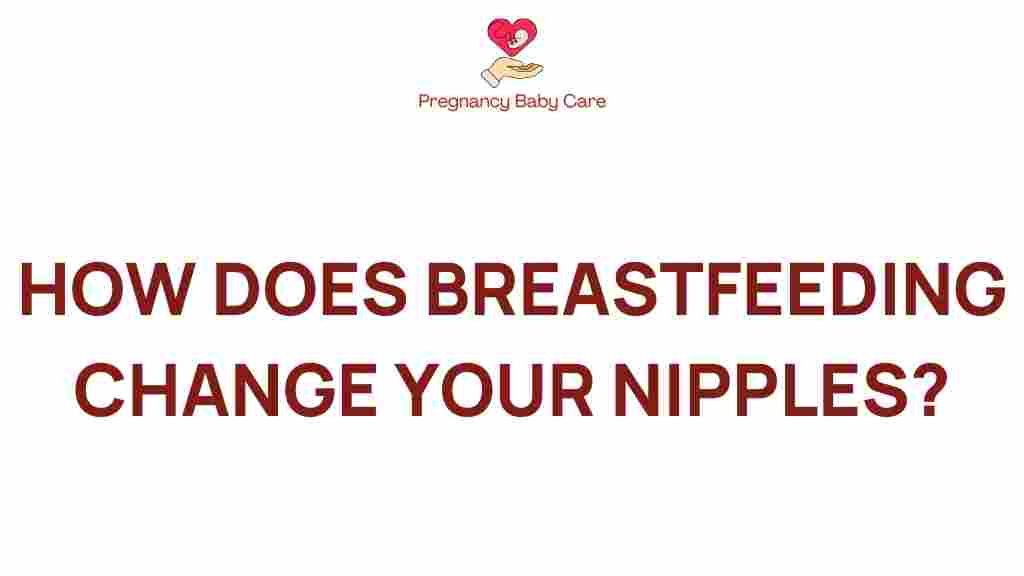The Fascinating Transformation: How Breastfeeding Alters Your Nipples
Breastfeeding is one of the most natural and beneficial experiences for both mother and baby. While many new mothers focus on the immediate joys of nursing, it’s essential to understand the changes that occur in the body, particularly in the nipples and breasts. This article delves into the fascinating transformation that breastfeeding brings to nipples, highlighting the various nipple changes, the implications for maternal health, and the overall benefits of breastfeeding.
Understanding Nipple Changes During Breastfeeding
During pregnancy and breastfeeding, women experience numerous body changes. One of the most noticeable transformations occurs in the nipples. Understanding these changes can help ease any concerns and enhance the breastfeeding experience.
- Increased Size: Many women notice that their nipples become larger and darker. This change is due to hormonal fluctuations and is designed to help babies find the nipple more easily.
- Texture Changes: The texture of the nipples may become more pronounced, with the areolas darkening and becoming more textured. This is a biological adaptation to aid in the breastfeeding process.
- Sensitivity: Nipples may become more sensitive during breastfeeding, which is entirely normal. This sensitivity can vary and may even change throughout the nursing journey.
- Shape Changes: The shape of the nipples can alter due to the mechanics of breastfeeding. Many women experience nipple elongation during nursing, which is a normal response to a baby’s latch.
The Benefits of Breastfeeding for Maternal Health
Breastfeeding offers numerous benefits for maternal health beyond the immediate physical changes. Here are some significant advantages:
- Weight Loss: Breastfeeding helps burn calories, which can assist in postpartum weight loss.
- Reduced Risk of Chronic Diseases: Women who breastfeed have a lower risk of developing breast and ovarian cancers.
- Emotional Bonding: Nursing promotes a strong emotional connection between mother and baby, which can positively affect mental health.
- Hormonal Balance: Breastfeeding aids in the regulation of hormones, including oxytocin, which promotes bonding and helps the uterus return to its pre-pregnancy size.
Postpartum Care and Nipple Changes
Postpartum care is crucial for every new mother, particularly regarding nipple care during breastfeeding. Here are some essential tips for managing nipple changes and ensuring a positive nursing experience:
- Keep Nipples Dry: Moisture can lead to irritation and infection. Ensure that your nipples are kept dry after feeding.
- Hygiene Practices: Clean your nipples gently with warm water, avoiding harsh soaps that may cause dryness or irritation.
- Use Nipple Creams: Applying lanolin or other nipple creams can help soothe and protect the nipples from cracking and soreness.
- Proper Latch: Ensure your baby has a proper latch to minimize discomfort and prevent nipple damage.
Step-by-Step Process for Managing Nipple Changes
Managing nipple changes during breastfeeding can be straightforward with the right approach. Here’s a step-by-step guide:
Step 1: Observe Nipple Changes
Keep track of any changes in size, shape, and sensitivity. Understanding what is normal for your body will help you recognize any potential issues early.
Step 2: Maintain Hygiene
Practice good hygiene by washing your hands before touching your breasts. After breastfeeding, gently clean the nipple area with warm water.
Step 3: Apply Soothing Cream
If you experience soreness or cracking, apply a safe nipple cream or lanolin ointment after each feeding to provide relief.
Step 4: Ensure Proper Latch
Work with a lactation consultant if you’re having difficulty achieving a proper latch. A good latch is crucial for minimizing nipple discomfort.
Step 5: Take Breaks if Necessary
If you experience severe pain, consider taking a short break from breastfeeding while still expressing milk. This can help the nipples heal.
Troubleshooting Common Nipple Issues
While breastfeeding is a natural process, some women may experience challenges. Here are some common nipple issues and tips on how to address them:
- Cracked Nipples: If you develop cracked nipples, ensure a proper latch and consider using nipple creams. If the problem persists, consult a healthcare professional.
- Engorgement: If your breasts become overly full and painful, try breastfeeding more frequently or expressing milk to relieve pressure.
- Blocked Milk Ducts: If you notice a painful lump in your breast, continue to nurse regularly, and apply heat to the area to encourage milk flow.
For more detailed guidance on managing breastfeeding challenges, visit this resource.
Women’s Health and Long-Term Effects of Breastfeeding
Breastfeeding has long-term effects on women’s health that extend well beyond the postpartum period. Research indicates that women who breastfeed may experience:
- Lower Risk of Heart Disease: Studies suggest that breastfeeding is linked to a reduced risk of heart disease later in life.
- Improved Metabolic Health: Breastfeeding can help regulate metabolic processes, contributing to better overall health.
- Enhanced Bone Health: Some research indicates that women who breastfeed may have better bone density in later years.
Conclusion
Breastfeeding is a remarkable journey that brings about significant nipple changes and offers numerous benefits for maternal health. Understanding the changes that occur in your body, especially in your nipples, can help you navigate the breastfeeding process with confidence and ease. By practicing good postpartum care, managing nipple changes effectively, and being aware of the long-term health benefits, you can make the most of your breastfeeding experience.
As you embark on this journey, remember that every woman’s experience is unique. Don’t hesitate to seek support from healthcare providers, lactation consultants, and breastfeeding groups to ensure you have the resources you need for a successful nursing experience. Embrace the changes, as they are a vital part of the beautiful journey of motherhood.
For more information on breastfeeding and maternal health, check out this useful guide.
This article is in the category Feeding and created by PregnancyBabyCare Team
